
The FWB 600 10-meter target rifle.
This report covers:
- History
- FWB 600
- Pump lever
- Description
- Things the 600 doesn’t have
- Power in an SSP
- Summary
We are starting to look at the iconic FWB 600-series 10-meter target rifles, and today we are looking at the 600 — the first of the series. I got this rifle at this year’s Arkansas airgun show.
History
In 1974 Walther brought the LGR single stroke pneumatic target rifle to the world. It would last until 1989 and would supplant the recoilless spring-piston rifles of the time, most notably the FWB 300S. As a single-stroke it needed none of the mechanism that the 300S used to allow the action to move in the stock. The LGR sits dead still when fired. It’s also slimmer than the 300S and perhaps a few ounces lighter. So for a decade the LGR dominated the 10-meter target rifle scene.
I first saw the LGR in 1976, while visiting the picturesque German town of Rothenburg ob der Tauber, I went into a German gun store and there saw and held a Walther LGR. I was amazed by its size its weight and the beautiful construction. The store owner told me how it operated and that, too, was amazing. It was the first 10-meter target rifle I had ever seen.
FWB 600
Ten years after the LGR hit the market Feinwerkbau brought out their model 600 single-stroke pneumatic. That would be 1984. I have no doubt the German elves at FWB were working furiously behind the scenes, trying to catch up to Walther, but they took a decade to do so. That tells me they put some real thought into their new model.
Pump lever
To the uninitiated the 600 probably looks quite similar to the LGR, but there are some important differences. First and foremost, I believe, is the pump lever. On the LGR the lever pivots at the rear of the action, which means when the lever is pumped and closed your hands are forward and away from your body. Both arms have to press against one another, making the pump stroke quite stressful. Maybe once or twice is no problem, but in a 60-shot men’s match plus sighters, it is tiring.
The 600, in contrast is pivoted at the front of the lever. When you pump the lever and close it the butt of the rifle is against your right side, making the stroke much easier. The FWB loading cover flips up when the lever reaches its most open point. The LGR loading port is manual and requires a separate unlocking action.
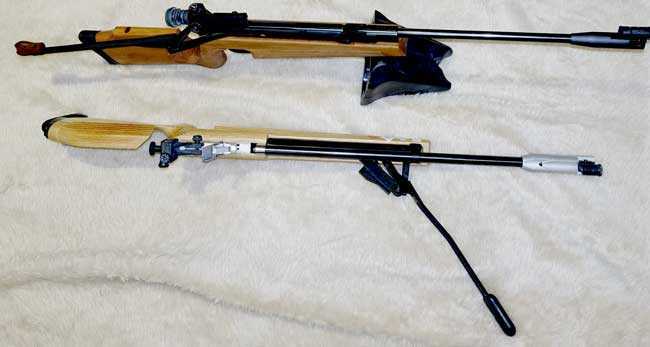
The Walther LGR pump lever (top) pivots at the rear. The 600 lever pivots at the front.
Then there is the loading port itself, which on the 600 is huge and wide open. The LGR port is smaller and it’s harder to access the breech.
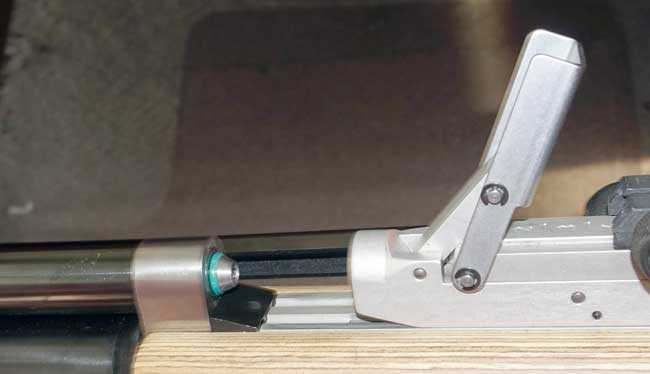
The FWB loading port springs wide open when the pump lever is moved all the way open.
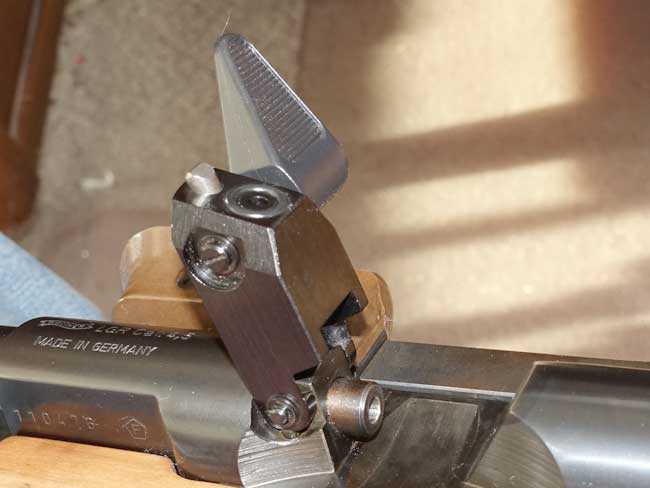
The LGR loading port is small, making it more difficult to seat the pellet in the breech.
But it is the location of the loading ports that’s the biggest difference between the two rifles. The FWB 600 loading port is back by the rear sight where you expect it to be. The LGR loading port is located in the middle of the rifle.
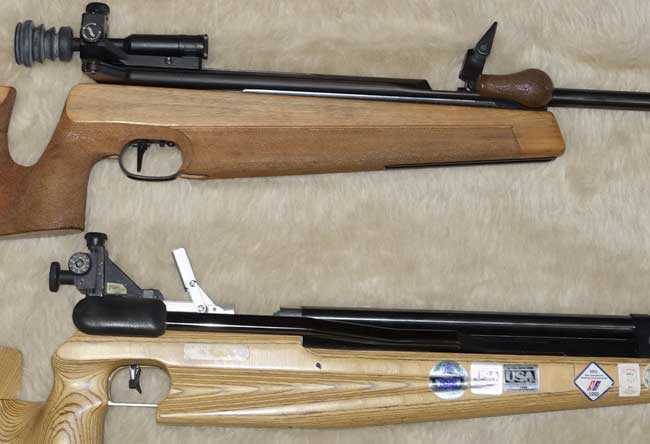
The 600 loading port (bottom) is back where you expect it. The LGR loading port is in the middle of the rifle.
This wasn’t supposed to be a comparison between these two rifles, but since the LGR was the first SSP 10-meter target rifle and the FWB 600 was the one that rose to challenge it, a comparison was in order.
Description
The 600 that I’m testing weighs 10 lbs. 12 oz. The length is 43 inches overall and the pull is 13 inches. The pull can be adjusted with spacers that I don’t have, and also by fractions of an inch at the trigger blade The curved rubber buttplate does adjust up and down.
The cheekpiece adjusts up and down within limits. Two screws on the bottom of the cheekpiece assembly do the adjusting. No other adjustments are possible, like castoff and camber, or slope, front to rear.
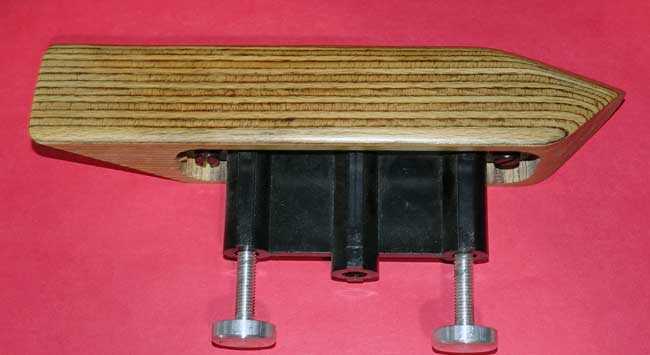
Those two screws are turned out to adjust the cheekpiece up…
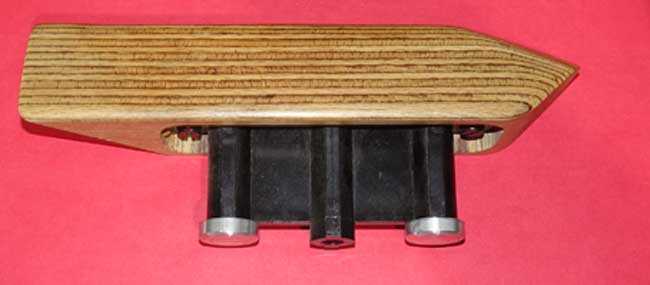
… and in to bring it down.
The stock is laminated rather than a solid blank of wood. Laminates are much stronger and FWB had a lot of bad experiences with the 150 and 300 stocks breaking at the wrist (next to the pistol grip) — especially the 300. Laminates are also heavier, but the overall weight of the test rifle is right where a competition rifle should be. The wood is rounded on all edges to give a soft, comfortable feel.
There is a long accessory rail on the bottom of the forearm. This is for a sling swivel and a hand stop.
Things the 600 doesn’t have
The FWB 600 lever has no ratchet stops to hold the pump lever as it is being closed. I read several reports online about people getting black eyes and knocking things off tables when the pump lever got away from them. Personally I can’t understand how this could happen as I find the rifle to be very ergonomic, but I have heard of soldiers letting the spoons fly off grenades before they were ready to throw them, too. So the FWB 601 that came out in 1988 does have a ratchet to catch and hold the pump lever.
The other missing feature is one that wasn’t yet recognized as essential, but makes all the difference in the world — a dry-fire feature. Sure, you can pump the rifle and shoot ir without a pellet, but it’s noisy and troublesome.
Power in an SSP
No single-stroke pneumatic is powerful — a fact that must be accepted. The guns work on just a single pump of air. If a second pump is attempted, the first one is lost.
The Blue Book of Airguns puts the velocity at 585 f.p.s. and Scott Pilkington, who sold me this rifle, told me he just resealed it, so it should be close to that mark. We shall see.
Summary
I guess I like 10-meter air rifles because I’m starting to have quite a collection of them. Whenever I think about getting rid of one, the quality of its design and build overwhelms me and I just can’t do it.

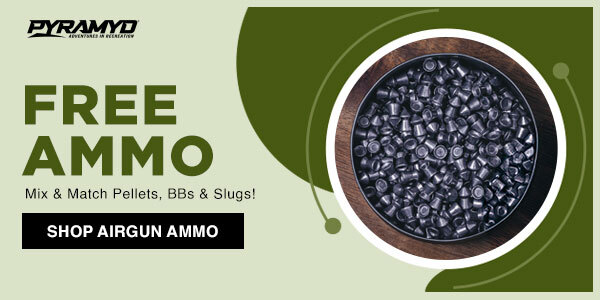
BB,
Does the entire rear sight move when you open the loading port?
Siraniko
No the cover opens in front of the rear sight. The sights are fixed on a dovetail on the receiver. These are great rifles, easy to cock, load, and shoot. I have owned a 600 and 601. I am currently shooting a C60. I am sure Tom will get into the evolution.
I’ve several SSPs which would be considered “powerful” in the UK against our 12ft lbs limit. They’re also all really stiff to pump. The output is definitely earned!
Tim
Tim, what are some of these guns?
And what is the fpe on them?
Are they guns not readily available on this side of the pond?
Your comment really made me curious! 🙂
The ones I’ve owned are mostly from the 90s.
From top to bottom in the attached image:
Parker-Hale Dragon
Air Logic Genesis
Titan Mohawk (x2)
Titan JB1 (x2)
Mine are mostly in .22 and run around 11fpe.
I understand that PCPs pretty much undermined the demand for SSPs with relative simplicity, lower weight, lower manufacturing costs etc. in the UK.
I’ll reply again with some more pictures.
Tim
If there’s interest I’d be happy to take some better pictures of my SSPs and write up some words.
Timl,
Please do so! And, if you use a darker background the rifles will be lighter and more well-defined.
BB
Tim,
I saw the pictures and the details below. Wow! Those are some real beauties!
Perhaps you should ask B.B. about doing a guest blog on these rifles; I think many here would find that to be of interest…I surely would; and thank you for what you have already provided here, which is very cool, of course. 🙂
Take care,
dave
Good day BB, Tim, and fellow airgunners. What an excellent selection of single stroke pellet rifles. I had the pleasure of using a Feinwerkbau 601 for two weeks while the owner was on holiday. The weight never bothered me as I do almost all my shooting using a Rock Jr. gun rest. I’m not sure of the major differences between a 600, and a 601. I do remember it could easily pattern one hole groups in targets at 10 meters, and no more then 1/2 in at 25 meters. It was indeed a sad day when I had to give it back to its owner. He has since moved across the country to Toronto.
Ps. It might be nice if in a future guest column you could tell us something about the rifles in the picture you supplied. Were they all target rifles? Why didn’t they survive the test of time?
Just curious Tim
Ciao Titus
I’d be delighted to offer a guest blog. I’m not an authority on any of these rifles but would be happy to share what I know of their history and how they handle.
None of mine were expecting a 10m target type market though the Dragon has a shallow dovetail at the muzzle which might accept a front sight and I’ve a Titan moderator adaptor machined to accept a front sight. I think the expected market was for hunting and field target (the image BB linked to of a a Dragon was the target stocked .177 FT model).
When I first saw these in magazines in the early 90s they seemed awesome. All the benefits of a PCP without the need for a scuba tank for filling. And of course, no power curve to worry about. The down sides of weight, cocking effort, relative complexity compared to springers and PCPs meant that the market for them wasn’t viable.
The same pressures might have been a part of the problem for “recoilless” 12fpe limit springers like the tx200 SR and Park RH91. The RH91 is certainly not a gun you’d want to carry all day!
I also have a few PCPs from the 90s and comparing them as more than just interesting collection pieces might be an interesting longer term project 🙂
Parker-Hale Dragon
Air Logic Genesis
Very unusual loading. The barrel runs forward to access.
Titan Mohawk.
There was also a multi-pump version which went to 20+ fpe.
Timl,
I believe Daystate acquired that design and I had one — a Sportsman Mark II. Mine made 25 foot-pounds in .22 caliber, and pumps 4 and 5 were very hard.
BB
Yes, I understand Daystate acquired main parts when Titan stopped trading and used the pump tube and valving as the base for the Sportsman.
The Sportsman is a “one that got away” for me. A friend was selling his collection and offered me one (12fpe with a blow-off limiter) but I didn’t have the funds to make a fair offer for all of the pieces he offered. (The one which didn’t get away was a take-down Colechester Gamekeeper which I think was sold in the US briefly as the Beeman Gamekeeper?)
Titan JB1. Really not many of these around after most were recalled and the Mohawk was offered as a replacement. The barrel is housed in a shroud and easily swapped between different calibres. The shroud cap at the muzzle unscrews to swap the barrel in the shroud.
Unusual loading – the barrel swings to the side. The valve is in-line with the barrel and the cocking effort is relatively low due to the efficient valving.
Image shows barrel swung open for loading and the exhaust valve which dumps directly behind the pellet.
I love how unusual they are.
BB,
Once upon a time I had the 601. FWB has quite a history of listening to the competitive shooter. Not only that, but not compromising. As you said, it took ten years for FWB to bring out their first SSP. They did not just catch up, they leapt forward.
Here at RidgeRunner’s Home For Wayward Airguns I have seen a few 10-meter air rifles and pistols come and go. I have enjoyed these awesome shooters for a bit and passed them on to others. Only my Izzy has stayed. There is something about that big honkin’ Russian SSP that resonates with me.
I can understand you having a large collection of these antique 10-meter air rifles. If I had the room here at RRHFWA, I likely would also.
“Pump Lever”
When you pump the lever and close it the butt of the rifle is against your right side, making the stroke much eaqsier (easier).
RR,
I remember your 601 and how you agonized over getting rid of it. I also remember how you agonized over buying that BSA underlever.
You agonize a lot. 😉
Fixed the typo. Thanks,
BB
BB,
LOL! Yes, at times I do! Most especially when it comes to who the gals at RRHFWA will be.
I kind of hated getting rid of the 601. It was such a nice air rifle. I did not know what I was going to get into with the BSA. I had never rebuilt an air rifle before then.
RidgeRunner,
YES! WELL said!
“FWB has quite a history of listening to the competitive shooter. ”
That statement succinctly tells the difference. If you reread B.B.’s blog and closely look at the pictures you will see all the holdovers from the sidelever/breakbarrel 10M rifles. before the Walther LGR.
The Fine Werk Bau (FWB) on the other hand, Incorporated most of the possible simplifications and ergonomics iprovements of the PROCESS of a shot cycle to help the shooter stay focused on the 10 Ring.
Unless a designer knows through doing, observation or carefully listening to competitors then engineering/manufacturing/bean counter expediencies will result in a real stinker build.
shootski
Shootski,
A drawback to this uncompromising method of FWB is the cost. Take note of the FWB Sport. When it first came out it was $900. Goodness! For a sproinger? The stock is not even walnut. You can now get it for about $600. A little more reasonable, but still…
RidgeRunner,
Yea I understand that.
But this is a Sporter and we know how cheap Sport airguners are compared to 10M shooters! The springer 10M train left the station decades ago. So the FWB Sporters plight is not hard to comprehend; just look at what those cheapskates did to The Sporter (SIG ASP20) of the Century. Along with some self serving bad reviews by some (a) name “unbiased” writer(s)…LOL! Bitter, bitter, bitter!
shootski
Shootski,
Most of the serious 10M shooters do not even own their air rifles. Also, when your college finances or your very living depends on how well you shoot at 10M, what is a few thousand dollars?
Both the FWB Sport and the Sig ASP20 were way beyond my price reach, most especially for what they offered. I do have to admit that the SIG in the synthetic stock was almost what I would have wanted, but I am not a fan of the gas sproingers. Now, if it had been adjustable, I would have bought it.
I guess I am spoiled. I have bought some very nice air rifles for almost nothing. Even on some of the “modern” air rifles, I have managed to find some really good deals.
I am kind of concerned right now. RRHFWA is kind of full right now. Some real special lady might come along and I might squeeze her in some place, but I need to have a couple of the “modern” airguns move out before I have any others move in. Most of them I do not want to see move out right now as I acquired them as tinkering airguns. What little funding I have for such things I am now spending on my tinker toys.
Alas, the price of airguns have once again left me behind. I will be quite fortunate if I do not get another “pay cut” this year.
P.S. The only review I recall of the SIG was the one that BB did. There are very few others I pay attention to. Most are not as “unbiased” as they wish to appear.
B.B.
The 10M target shooters at my range all have a “helper” where they rest the rifle between shoots. I would assume that this makes the cocking very easy. The Walther’s cocking seems more natural?
-Y
No. Even though these rifles have very low cocking effort, the FWB is the ‘natural’. Hand finds hand is natural. The Walther requires you to either shift your support hand far forward to counteract the closing force (leaving the bulk of the rifle’s weight awkwardly dangling), or holding the stock rearward and having to counteract the increased closing force. Again, FWB for the win.
BB
Thanks for reporting on this rifle. I was looking to buy one a year or so ago but went an entirely different direction and got my Sig ASP20 in .177. I share your attachment to 10 meter rifles and the ones I own are included in my shooting rotation. The quality shouts out loud and oh those fabulous triggers.
I am curious how 10 shot group accuracy compares among the FWB300S, Walther LGR and FWB600/601. I’m guessing they are similar if time and numbers of shots are no issue. But maybe not. If PCP 10 meter rifles are more accurate perhaps the same can be said for a single stroke pneumatic.
Just wondering.
Deck
Deck,
Curiosity is why I write these reports. We will all find out together.
BB
Deck,
I am not sure of the year, but I think it was in 2000. A young lady from Cuba won the Pan Am games shooting an FWB 601. The only advantage a PCP has over an SSP is the lack of the charging stroke effort. When you are talking 60+ shots, that can be considerable.
Now of the three that you have mentioned, I would take the FWB 600 series as it is extremely accurate and the least labor intensive to shoot. IMMHO of course.
RR
Aside from the physical and mental advantages of the 600 series, do you think this series is inherently more accurate removing all advantages of effort to get off 60 shots within a required time?
Deck
Deck,
Golly gee whiz, what do you want? The whole idea of the various improvements over time was to increase shootability. If all other variables were equal, IMMHO the FWB 600 series would come out on top. It will likely be very close, but sometimes microns are the difference between gold and silver.
Now, having said all of that, I would personally prefer to have the FWB 300S. Just because.
RR
FWB 300s for me.
RR
I’m having a bit of an issue posting my comment. It may show twice.
Me too on the FWB300S but I don’t own an LGR or any of the 600’s. Guess I’m hoping my rifle could still compete but for the obvious time/exertion. Maybe BB will do some kind of shoot off. I do it everyday and love it.
Stay safe.
Deck
Deck,
The FWB300S is still competitive to a certain level and will likely continue to be such. When you start talking real serious competition, even the FWB 600 series falls to the side. Like I said, sometimes the difference between gold and silver is microns. Companies like FWB, Anschutz, Walther, etc. spend a lot of time and money on those few microns.
Now, as to your idea of BB doing a shootoff, I like it. Getting him to do it is another matter. Also, it will require quite a few days as he will want to be fresh with each 10M air rifle.
BB,
Thanks for this! I am fond of 10 meter airguns and particularly the Feinwerkbaus. Looking forward to the rest of this report!
Interesting to see the comparison to the Walther – different engineering approaches to the same concept/application. Curious, seeing where the loading ports are located, how do the barrel lengths compare?
Don’t know if it within the scope of this blog series but do you have (or have access to) any of the other rifles (601, 602 & 603) that you can discuss the evolution of this family? I’m particularly interested about the inertia compensator on the 603, how it works and how to adjust it. Seems that it was considered to be an important upgrade to 10 meter airguns. The 603 is (extremely) calm to shoot but I have nothing to compare it to, is it something a casual shooter (like myself) can appreciate/notice or if it is a sales gimmick. One would think that the “recoil” of an 8 grain pellet being shot at less that 600 fps out of a 10 pound rifle would not be noticeable (by mere mortals anyway).
Hank
Hank,
The LGR barrel is 19.5 inches. Oh, what a good boy am I! 😉
I think you would need to shoot a 600 to make that comparison.
I will try to test other FWB 600-series rifles, but I ain’t gonna buy ’em all!
BB
Hank,
I used to own a 601. What I found was that even it had some recoil. One day I laid it on my denim shooting bags and sighted through the scope I had mounted. Without touching the 601 in any way, I touched the trigger and it fired, recoiling about one half inch. When you start talking about the difference between gold and silver, the inertia compensator does have an effect.
RR,
Thanks for that (I think). Now I have to try the 603 to see if it moves LOL!
Action/reaction and all that stuff, the laws of physics always apply. Guess that I’m surprised because, intuitively, you would think that at such a low energy level the tiny mass of the pellet wouldn’t move an airgun that’s about 10,500 times heavier. Go figure eh?
I’ve thought about mounting a scope on the 603 (several times) but it’s awkward. Don’t like a high scope so I’d have to design/machine a breech block to replace the loading gate.
I mount a Reddot for summer outdoor plinking and reinstall the aperture sights for winter indoor 10 meter shooting. That works for me.
Hank
Hank,
Talk to Neal Stepp. He may be able to get you a short loading gate cover like I got from him so you can mount a scope.
http://www.iss-internationalshootersservice.com/
Thanks RR!
B.B.,
I long for a “more powerful” single stroke pneumatic. That said I would be happy with 585 fps! I even like my cheap old Daisy Grizzle but at 300 fps (pellets) it’s just too weak for me. Maybe someday they’ll make one in the 600-650 fps range that isn’t real heavy. I’ve read about, and you have spoke about, one that was 900 or so fps, but I don’t think that gun was ever mass produced. A guy can dream. Have a great weekend!
Doc
Doc,
Once upon a time, in a land far away, just before they went belly up, Webley and Scott developed an SSP / sproinger hybrid that would produce 12 FPE. It was called the Paradigm. It was beautiful. It was very complicated internally. It was very hard to cock. It was also obsolete at its creation. The PCP has advanced enough and the price has come down enough that a quality SSP or multi-pump is not really marketable except to a very few who like curiosities.
Here’s an issue that B.B. won’t give two hoots in hades about but others might.
Scoping the LGR Is much easier than the FWB 600 series because of the differing sizes and locations of the loading ports.
Kevin,
Hoot.
Apparently you are right! 😉
BB
Kevin,
I have scoped an FWB 601. The only issue I had was the loading port cover. It is designed to block your sight through the rear aperture when the port is open. There is a short loading port cover available that will allow for the mounting of a scope.
http://www.iss-internationalshootersservice.com/
Wasn’t it Webley or some other UK manufacturer that was about to come out with a more powerfull sporting ssp that was easy to pump called the Paradim just before they went under? I think I would have purchased one of those, it seemed
much like a 12 ft lb springer without the recoil….
Chachoze,
Yes, there was a more powerful SSP. I actually shot one at the Arkansas airgun show many years ago and I wrote about that experience and took pix of the gun. As I recall, it was called the Paradigm, but I’m not sure about that, and I’m far too lazy to look it up.
Oh, fudge — you made me do it!
/blog/2008/05/2008-little-rock-airgun-expo/
It was just as easy to operate as setting the timing on a race car engine in the middle of a race. It was a kluge of things that all conspired to boost the energy — sort of like the coyote on roller skates with one of his Acme rockets strapped to his back. 😉
BB
Well, in the caption I called it a Parker-Hale Dragon, so that was what it was called at that time.
BB
That’s the linkage on a Dragon.
Relatively easy to pump for around 11ft lbs with the pellets it likes.
I don’t think the Paradigm made it into production (the Dragon was in production).
There’s some more info from the Paradigm designer on his website https://www.get-designs.uk/Blog/Paradigm-Development-part-3
Tim
BB
“I guess I like 10-meter air rifles because I’m starting to have quite a collection of them. Whenever I think about getting rid of one, the quality of its design and build overwhelms me and I just can’t do it.”
Those at your estate sale will thank you for that. When mine occurs,, those in attendance will likely snigger at my eclectic taste.
Ed
I was lucky enough to find a 602 for sale locally several years ago. Wonderful to shoot. It can certainly shoot better than I can, or likely ever will. Mine was one of a few that were detuned to just under 500fps to make them easier to use for youth shooting as here in Canada as long as the airgun is below that velocity it’s exempt from the regulations requiring a license in order to own and use. I can actually feel the recoil on mine when I shoot it, despite the slightly lower velocity and the extra muzzle weight it has. I’m not good enough for that to be a limiting factor but I can see why with the 603 they addressed it.
When some friends took me out to the range to shoot a while back, I had been shooting only the 602 for months and, as I said, had become sensitive enough that even it’s minuscule recoil was apparent to me. They handed me a Moisin-Nagant… with the first shot I felt like I had been hit by a meteorite!
B.B.,
My FWB 601 is still the greatest shooting air gun I’ve ever fired. It is absolutely inert when it fires, or at least the “equal and opposite reaction” of the pellet flying through the barrel is too subtle for me to feel given my 601’s weight, which just from hefting it has me estimating roughly 13 pounds, perhaps more as I have a matching FWB bench rest forearm attachment on its accessory rail.
I have always shot mine rested except for a handful of times. It is not extremely easy to cock — it takes just enough effort that I feel it. I can’t imagine how hard-cocking an LGR must be with an utter lack of leverage.
I once shot it 60 times in under 60 minutes, bench rested, at a spinner in my basement’s 10 meter range. I was definitely feeling a bit of fatigue near the end. It was enough that it effected my concentration. I don’t remember which spinner in my collection I used and so don’t know what size it was, maybe 1.5 inches, but I recall being tired enough that I rushed a few shots at the end and missed. Bench rested at 10 meters indoors, it is hard to miss even small targets if one concentrates. It is that accurate, and the trigger is absolute perfection.
The problem with the FWB series is the difficulty in scoping it, if one so desires. Therefore, I have always kept the FWB aperture on it.
Man, what an air gun.
Michael
Well about the bit about knocking yourself a black eye with one of these. I did something very stupid with one once.
I was shooting groups with a couple of airguns and was shooting my 300S and found the barrel was too dirty to hold a group.
I was in a hurry and was lazy so I sprayed some brake cleaner into the barrel, popped a couple felt pellets after that and was shooting tight groups again. Great success!
Then I went over to the 600. Same thing somehow, very dirty. So in my hurry to get my groups done before the range closed I thought I’d try the same quick and dirty trick.
So I shot a felt pellet after filling the bore from the rear with brake cleaner. So far so good. Opened up the lever for the next felt pellet. Pumped the handle and BOOOM!
Rifle on the floor, smoke in my face, ringing in the ears, clueless and disoriented from the concussion I stood there.
The 600 sucks air in through the barrel, so all the vapors from the brake cleaner got sucked into the compression tube, and handily exploded in my face on compression, throwing out the handle with explosive force.
I know all these things and should have known better.
I was uninjured, but not unperturbed. The rifle to my surprise was absolutely fine. Not a mark on her. Shot great after, not even a mark of stress on the handle mechanism or anything. Heh Feinwerkbau.
If I would have caught that handle in the face I would have been out cold for sure, lost some teeth or worse.
I still like the 600 best of all the 600 series, smoothest pumping out of all of them.
All the best,
Carel
I have an FWB 603, so I’d like to weigh in on this thread since a lot of people commenting are familiar with this rifle. Mine is left handed. I’ve talked with people that were surprised that its charging lever was on the left side. This makes sense, but I had never thought about this. Some other left handed guns aren’t totally left handed. The original diopter sites suck for plinking. All you can see through them is two micrometer-thin ring-slivers of light because the two apertures have been so precisely sized for 10-meter targets. No wonder that USA shooter shot at the wrong target to loose at the Olympics! I tried a Red Dot that was really nice on the 603, but honestly, the gun will easily outshoot the smallest size dot. The “inertia compensator” really does work – you feel zero recoil! Not apples to apples, but I can feel minute recoil in my SSP P3 and HW75 pistols. There is still action/reaction with a 7 or 8 grain pellet which is now gone. Finally, it is hard to scope this rifle since the dovetails are so short – but I’ve done it (see the attached photo (I hope)). It looks like earlier versions also had a dovetail ahead of the loading port, but not on the 603. The FWB scope mount made for these guns is unobtainable (as is an aluminum stock). The scope I used is a Hawke 2-7×32 – who needs more on a weak-kneed, 10-meter, offhand only gun? FYI – it’s AO goes down to 15-feet. I used BKL risers, and cut-down BKL rings glued (yes glued; remember no recoil) together to get to get the scope as low as possible but still have the loading port able to open. Note, the benefit of not having rings in front of the scope turrets is that the scope can be lower. The gun’s adjustable cheek piece made eye alignment to the slightly higher scope pretty easy – actually this head-up position is pretty comfortable. Yes, this installation looks kind of funky with both rings behind the scope turrets, but think about it, why not? My only other peanut gallery comments are that I’ve already had to have the rifle re-sealed (I don’t use it that much), and personally I don’t like the blonde laminated stock. The factory finish doesn’t hold up well (see pic), and the wear shows. I will refinish the stock sometime to some darker color; perhaps red or blue hopefully to look like those cool aftermarket laminated stocks. Let’s see if I can attach a photo.